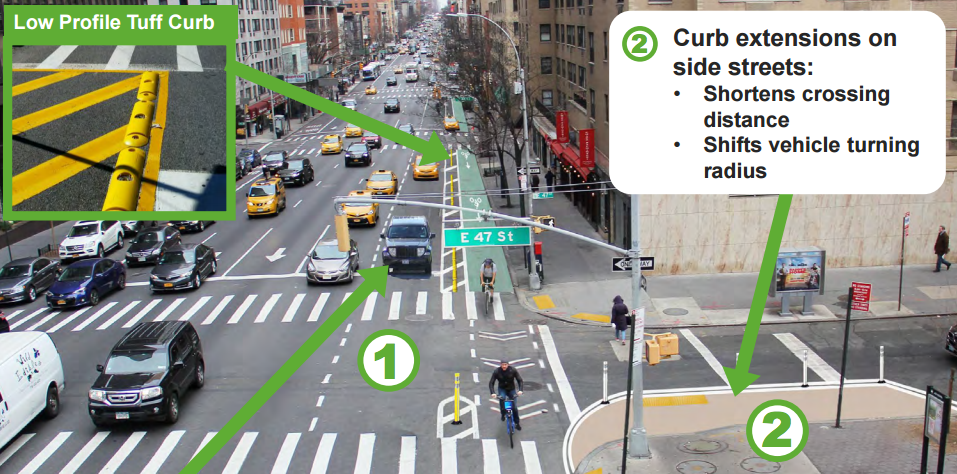Last summer, DOT put forward a plan to install a protected bike lane on Second Avenue between 59th Street and 43rd Street. On most of those blocks at most times, the bike lane would be protected by parked cars, but during the morning and afternoon rush, the parking lane would be a moving lane. So DOT said it would install "low profile tuff curbs" -- a line of yellow plastic rising several inches above asphalt level -- to keep motorists from making incursions into the bike lane.
Now the new bike lane is in place, but the "tuff curbs" are nowhere to be seen, and DOT has no intention of adding them.
When Macartney Morris told DOT that the freshly painted bike lane was continually blocked in the morning and asked about the addition of protection, Manhattan Community Coordinator Colleen Chattergoon said in an email response that the agency decided against using the tuff curbs "due to safety and accessibility concerns raised during additional design review and product testing."
That doesn't exactly clear up why the tuff curbs were deemed unsafe, or why other options like concrete curb stops or vertical plastic posts couldn't be used instead.
Some form of protection is badly needed. Otherwise, as Morris observed this morning, the bike lane will be obstructed like this during rush hours:

The bike lane is least useful during the times of day when the most cyclists need it. From 7 a.m. to 10 a.m. between 52nd Street and 43rd Street and from 3 p.m. to 7 p.m. between 48th Street and 43rd Street, the bike lane is just paint on the ground.
That doesn't deliver on DOT's promise to shrink the gap in protection on Second Avenue.
When Manhattan Community Board 6 endorsed the project last summer, it praised DOT and begged for more. There are still 18 blocks of Second Avenue that lack protected bicycle infrastructure, even when the parking protection on the new segment in Midtown is in effect.
If DOT won't use tuff curbs, there's another way to improve protection on Second Avenue -- just make the parking lane permanent. That would require claiming street space from motor vehicle traffic that the agency has been loathe to touch so far, leaving cyclists with a stressful patchwork of a route on one of the most important bike network segments in the city.






